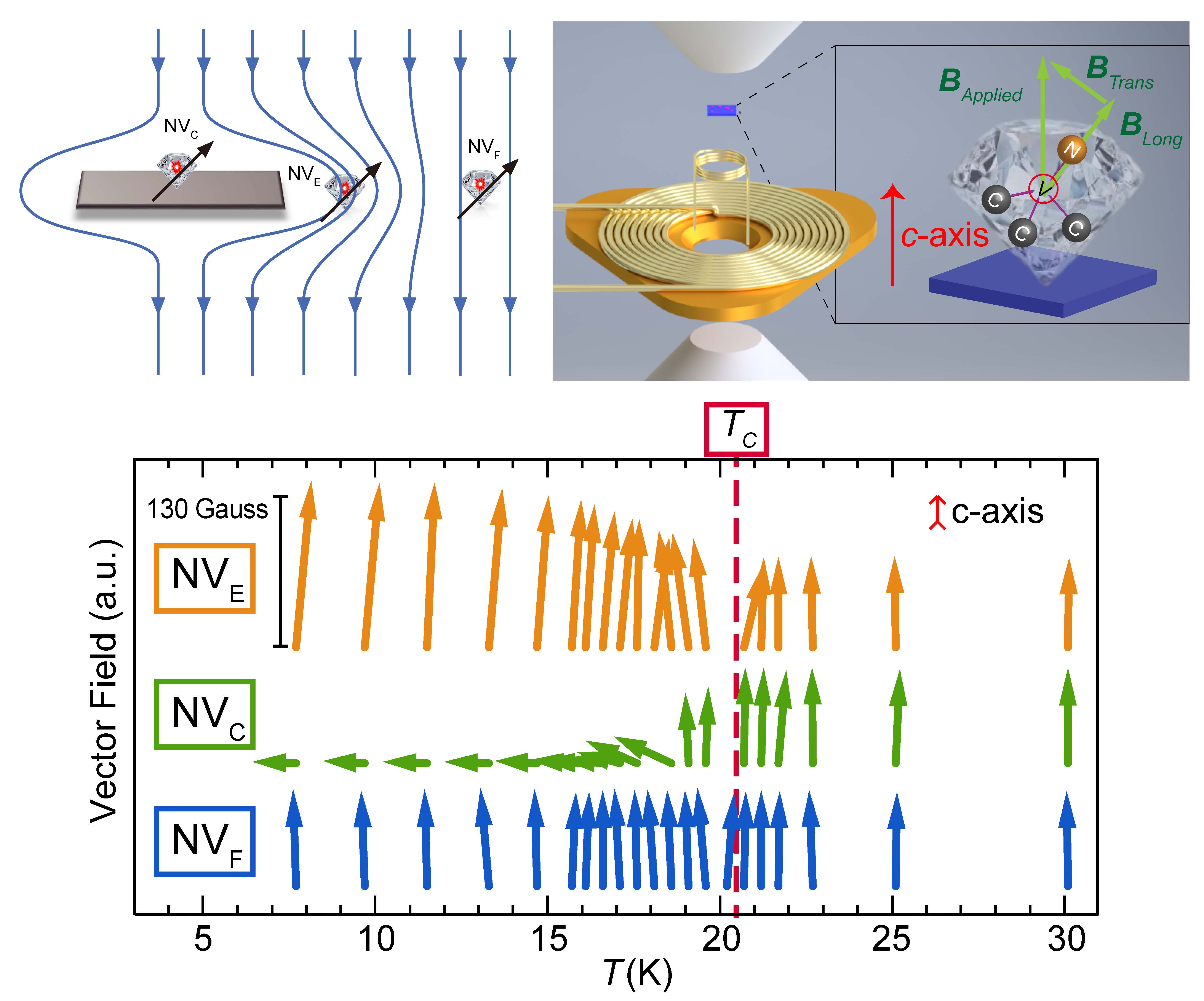Extreme conditions like ultra-low temperatures and high magnetic fields are frequently required for the elimination of thermal noise and fluctuations to unravel the underlying intrinsic physics. For example, cooling down solid state quantum computing nodes made of point defect or dopant to tens of milli-Kelvin temperatures will quench the relaxation channels which hamper intrinsic long decoherence time and manipulate coupling with photon and phonon fields in a controlled manner; and the pairing of the electrons when a given quantum material undergoes Furthermore, pressure is a clean, continuous, and systematic tuning parameter among the competing ground states in strongly correlated electron systems such as superconductivity and magnetism.
Sensing with qubits and novel quantum measurement techniques can provide higher resolution and sensibility. In this project, we use qubit based on point defect in diamond to realize sensing under extreme conditions.

Selected Publications:
1. King Yau Yip, Kin On Ho, King Yiu Yu, Yang Chen, Wei Zhang, S. Kasahara, Y. Mizukami, T. Shibauchi, Y. Matsuda, Swee K. Goh, and Sen Yang, Measuring magnetic field texture in correlated electron systems under extreme conditions, Science 366, 1355-1359 (2019).
2. Kin On Ho, Man Yin Leung, Yaxin Jiang, Kin Pong Ao, Wei Zhang, King Yau Yip, Yiu Yung Pang, King Cho Wong, Swee K. Goh, and Sen Yang, Probing Local Pressure Environment in Anvil Cells with Nitrogen-Vacancy (N-V−) Centers in Diamond, Physical Review Applied 13, 024041 (2020).
3. Kin On Ho, King Cho Wong, Man Yin Leung, Yiu Yung Pang, Wai Kuen Leung, King Yau Yip, Wei Zhang, Jianyu Xie, Swee Goh, and Sen Yang, Recent developments of quantum sensing under pressurized environment using the nitrogen vacancy (NV) center in diamond, Journal of Applied Physics 129, 241101 (2021).